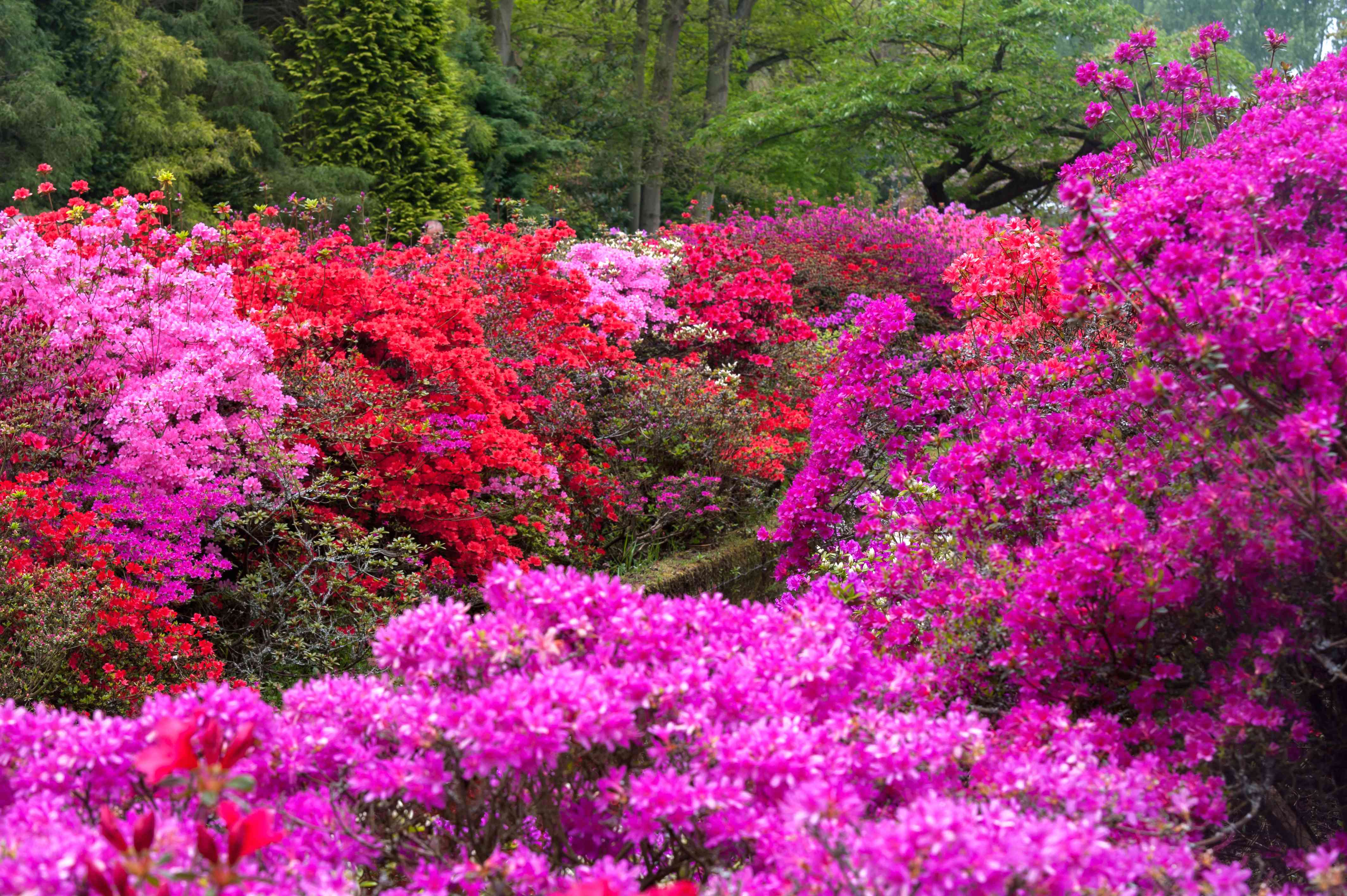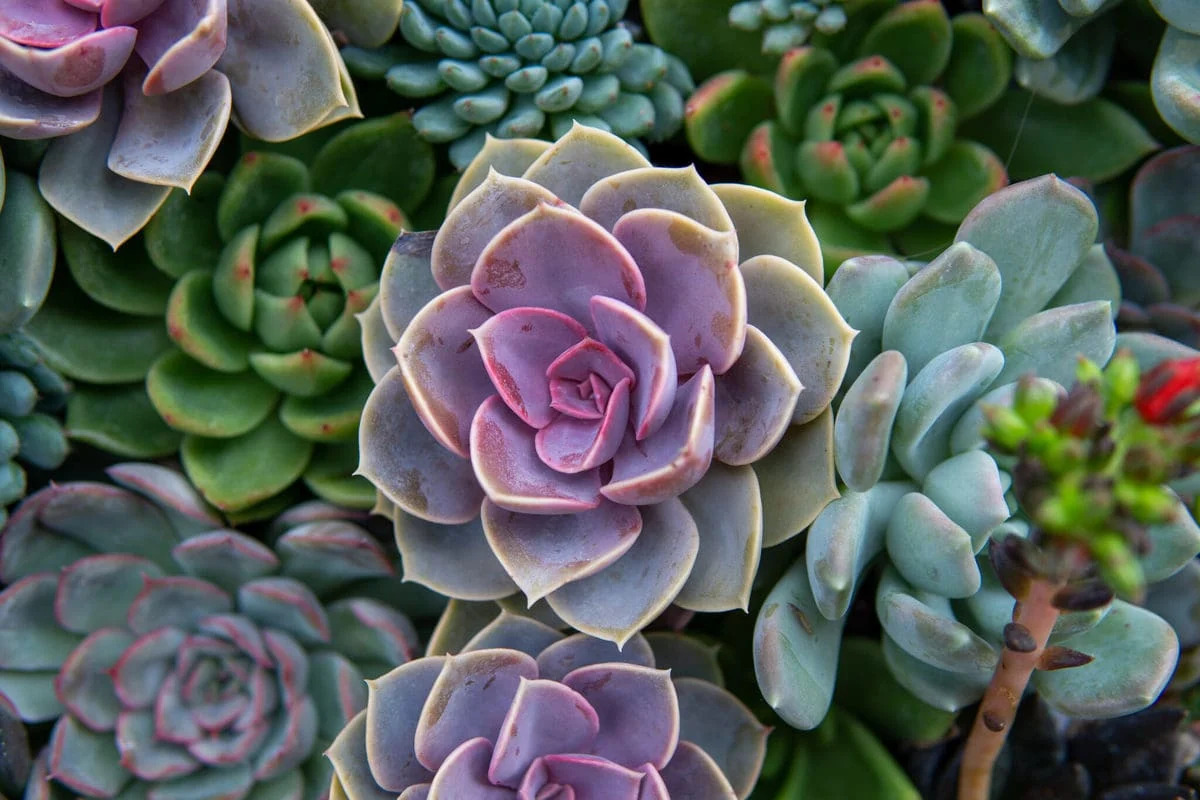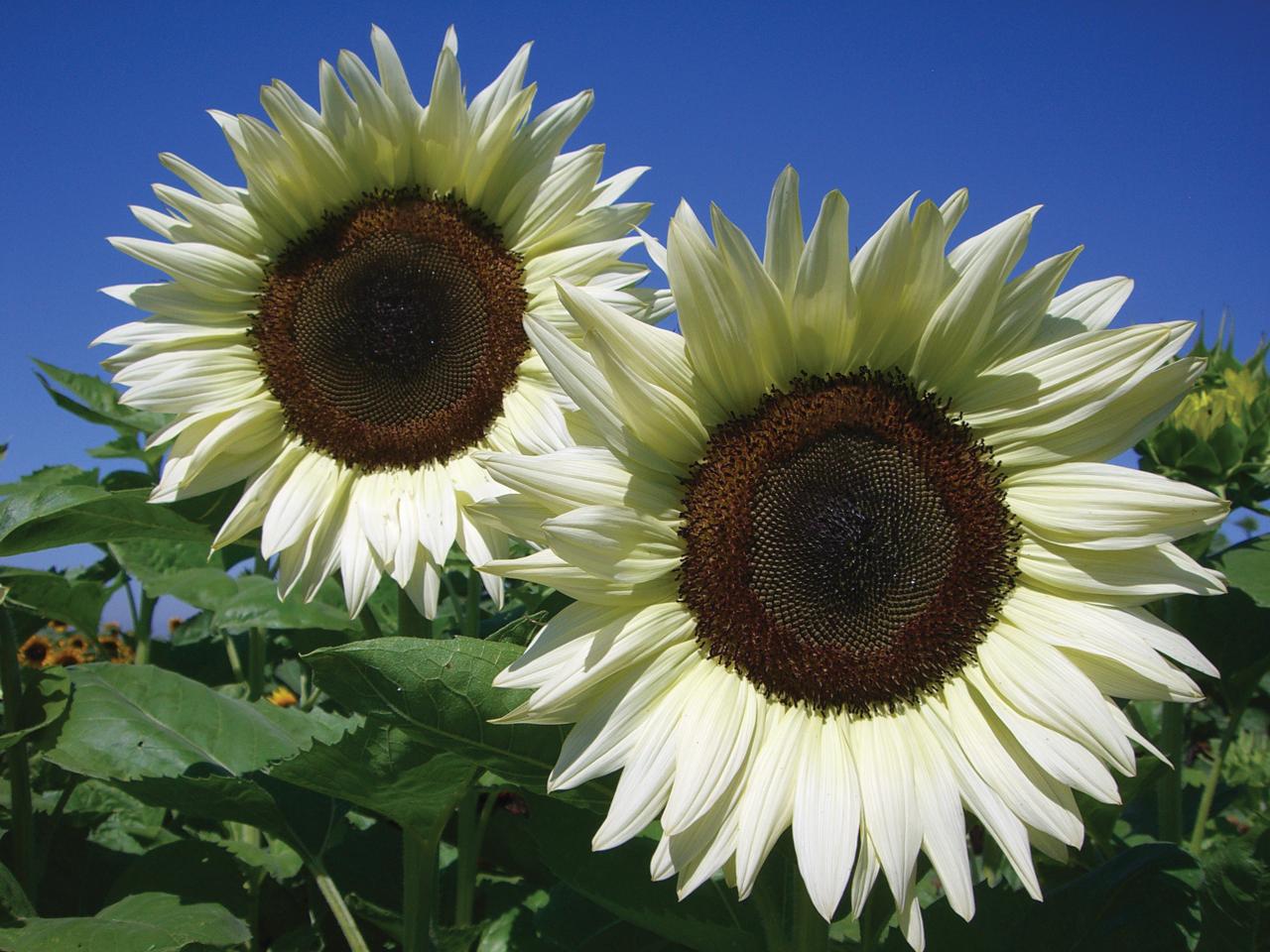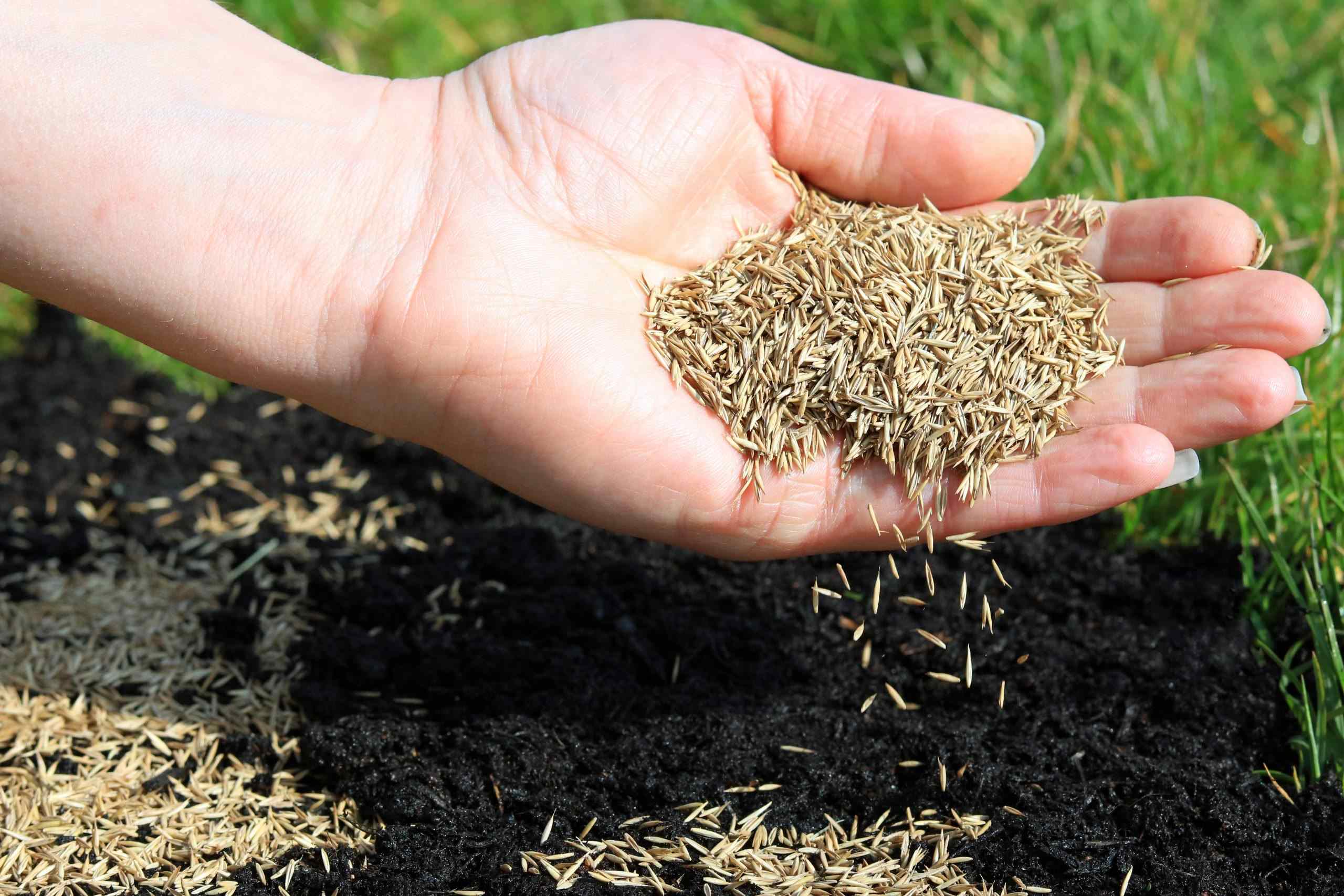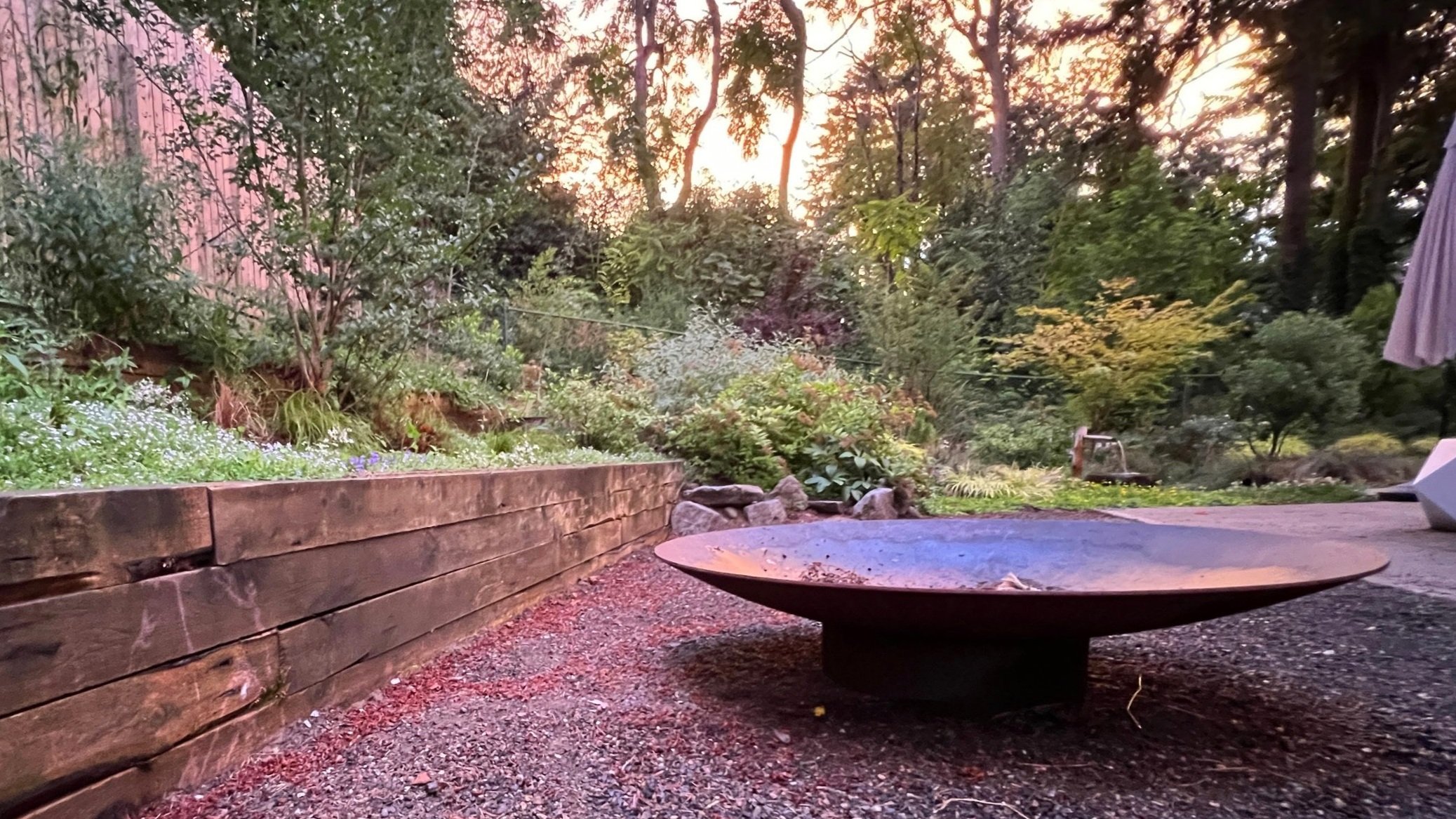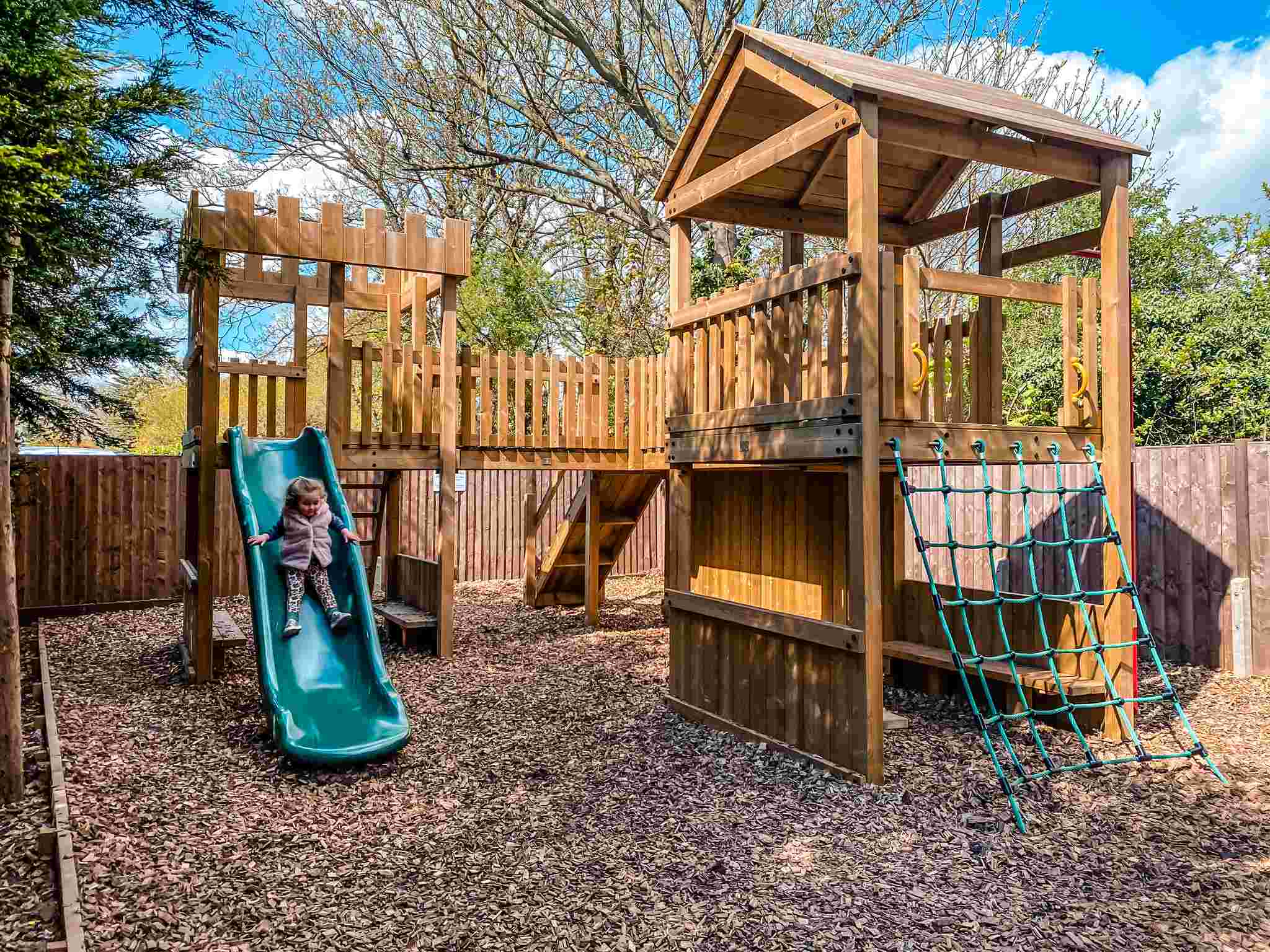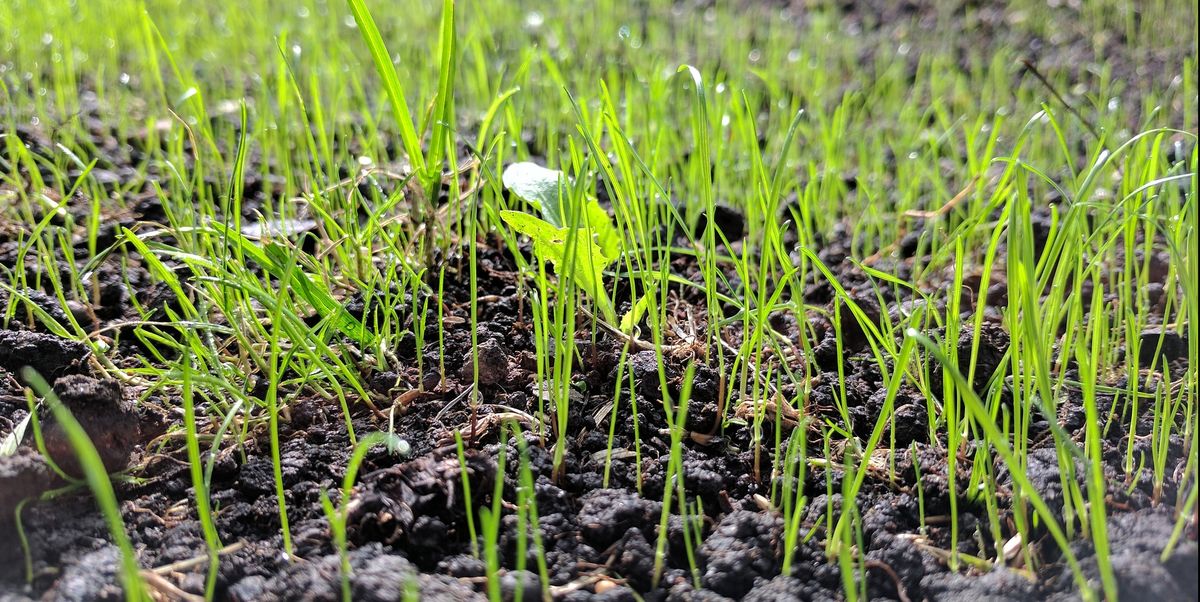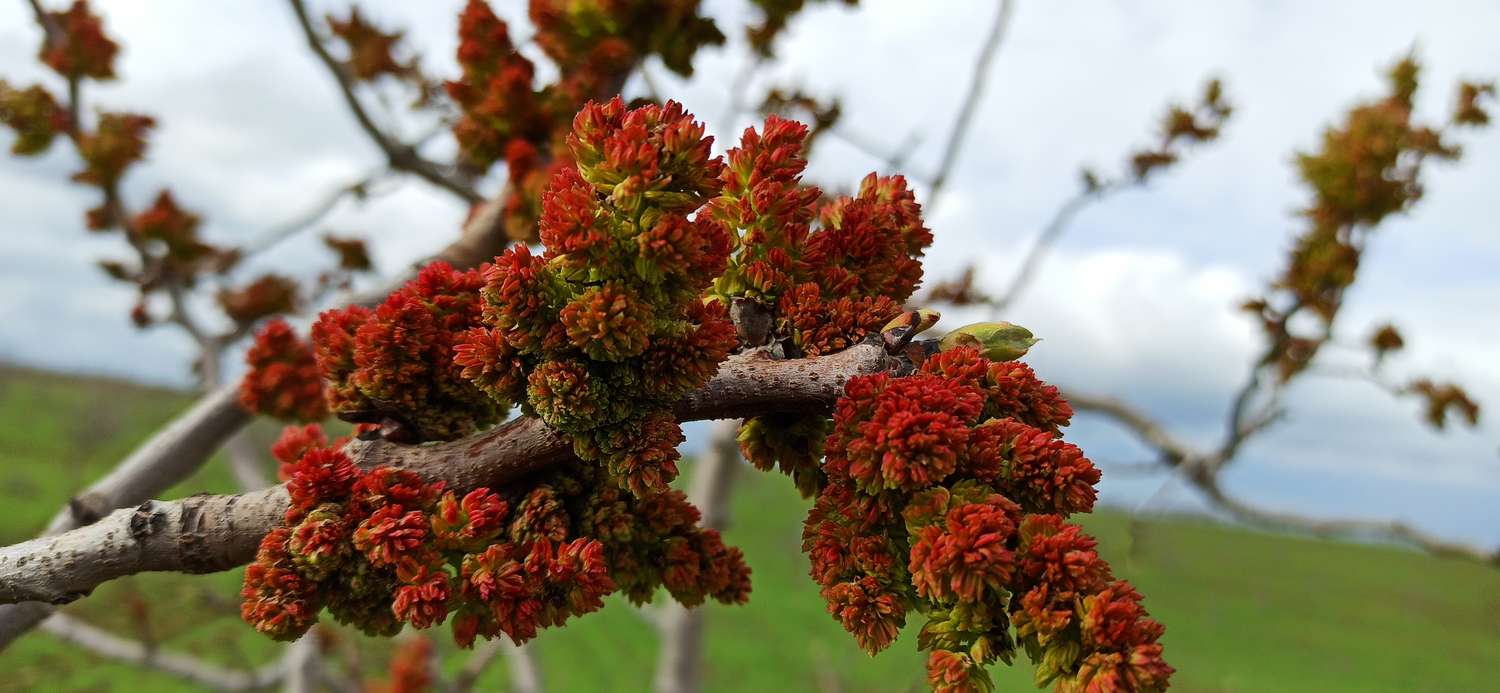Home>Gardening Tips and Tricks>Problem Solving>Landscaping Ideas For Areas Where Grass Won’t Grow
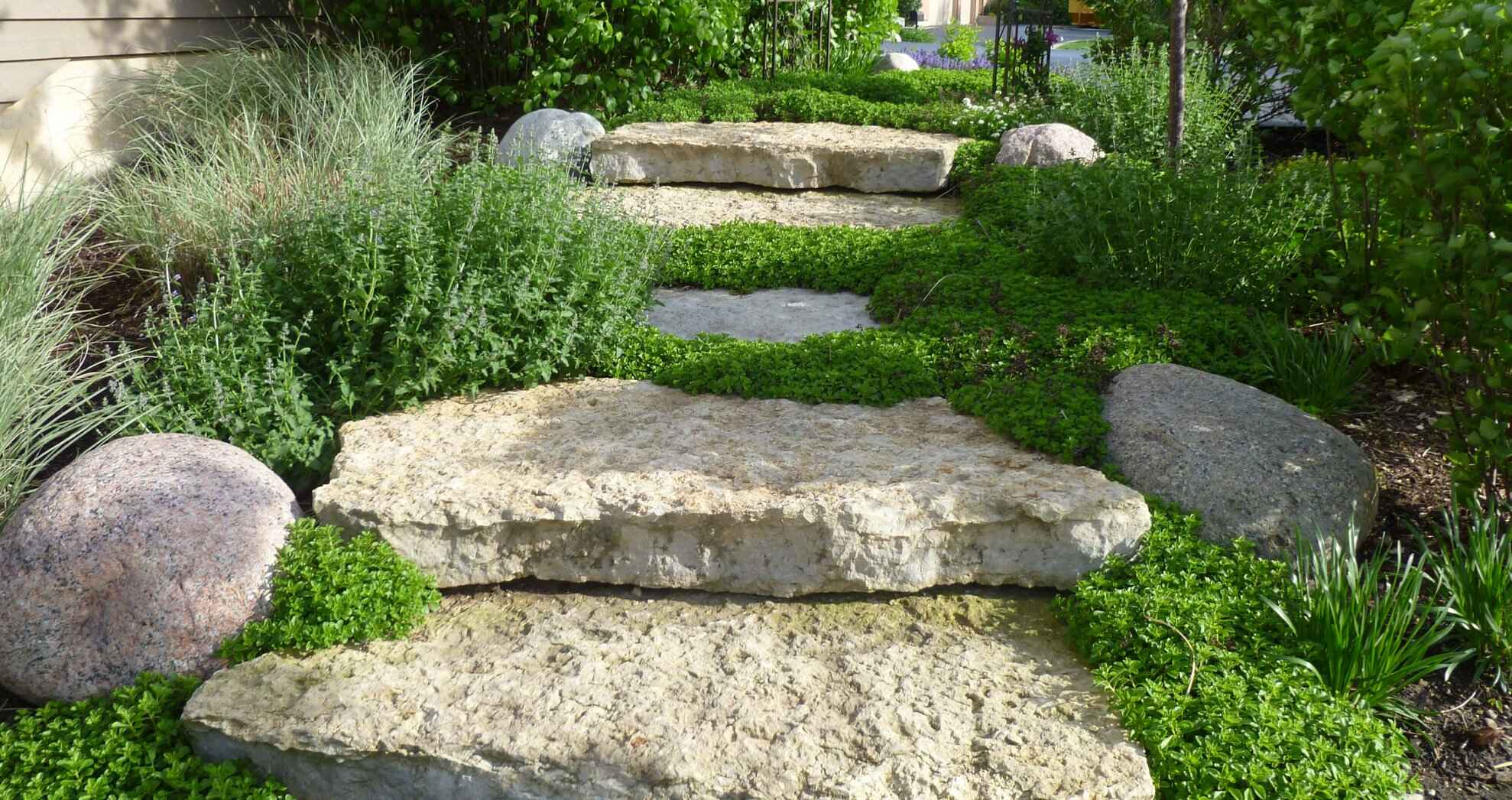

Problem Solving
Landscaping Ideas For Areas Where Grass Won’t Grow
Modified: February 8, 2024
Discover problem-solving landscaping ideas where grass won't grow. Transform your outdoor space with creative solutions for barren patches.
(Many of the links in this article redirect to a specific reviewed product. Your purchase of these products through affiliate links helps to generate commission for Chicagolandgardening.com, at no extra cost. Learn more)
Table of Contents
- Introduction
- Reasons why grass won’t grow in certain areas
- Alternatives to grass in landscaping
- Xeriscaping: Creating a low-water garden
- Hardscaping: Creating functional outdoor living spaces
- Ground covers: Using plants that thrive without grass
- Rock gardens: Incorporating rocks and boulders for aesthetic appeal
- Ornamental planting: Adding colorful flowers and plants
- Mulching: Using organic materials to cover bare soil
- Creating pathways and walkways
- Using raised beds and containers
- Conclusion
Introduction
Having a lush green lawn has long been a symbol of a well-maintained and beautiful property. However, there are instances where grass simply refuses to grow no matter how much effort and attention we give it. Whether it’s due to poor soil quality, excessive shade, heavy foot traffic, or other factors, dealing with areas where grass won’t grow can be frustrating for homeowners.
The good news is that there are plenty of alternative landscaping ideas that can transform these stubborn areas into functional and visually appealing spaces. By thinking outside the box and exploring different options, you can create a landscape that is not only low-maintenance but also environmentally friendly. From xeriscaping to hardscaping, there are numerous creative solutions that can turn these problem areas into standout features of your outdoor space.
In this article, we will explore various landscaping ideas where grass won’t grow, providing you with inspiration and guidance to transform these challenging areas into beautiful focal points of your property.
Reasons why grass won’t grow in certain areas
There are several factors that can contribute to grass not growing in certain areas of your lawn. Understanding these reasons will help you identify the underlying issues and find appropriate solutions. Here are some common causes:
1. Poor soil quality: Grass requires well-draining soil with the right balance of nutrients. If the soil in a specific area is compacted or lacks essential nutrients, grass may struggle to establish its roots. 2. Excessive shade: Grass thrives in direct sunlight, but if an area of your lawn is heavily shaded by trees, buildings, or other structures, it may not receive enough sunlight for grass to grow properly. 3. Heavy foot traffic: High foot traffic can cause soil compaction and damage the grass, making it difficult for new grass to grow in these areas. Popular walkways or play areas are especially prone to this issue. 4. Waterlogged soil: Areas with poor drainage or where water pools regularly can suffocate the grass roots, preventing healthy growth. 5. Presence of tree roots: The roots of nearby trees can compete with grass for water and nutrients, inhibiting its growth. 6. Chemical contamination: The use of pesticides, herbicides, or other chemicals in the area can negatively impact grass growth. Identifying the specific issue preventing grass from growing in a particular area will determine which alternative landscaping solution will work best in that space. By addressing the underlying problem, you can ensure the long-term success of your landscaping endeavors. In the following sections, we will explore various alternatives to grass that can thrive in these challenging areas.
Alternatives to grass in landscaping
When grass won’t grow in certain areas of your property, it’s time to consider alternative landscaping options. These alternatives not only provide visual interest but also offer practical solutions to common grass-growing challenges. Here are a few ideas to explore:
1. Xeriscaping: Xeriscaping is a landscaping technique that focuses on using low-water plants and efficient irrigation systems to create a beautiful and sustainable garden. By choosing native plants that are well-adapted to the local climate, you can minimize water consumption and reduce the need for grass in water-sensitive areas. 2. Hardscaping: Instead of grass, consider incorporating hardscape elements like patios, decks, or walkways to create functional outdoor living spaces. Using materials such as pavers, concrete, or natural stones can add structure and texture to your landscape while eliminating the need for constant grass maintenance. 3. Ground covers: Ground covers are low-growing plants that spread and cover the ground, providing a lush and green alternative to grass. Examples include creeping thyme, creeping Jenny, or moss. These plants are typically low-maintenance, require less water than grass, and can tolerate a variety of growing conditions. 4. Rock gardens: Rock gardens utilize rocks, boulders, and gravel to create a visually striking landscape that requires minimal maintenance. By incorporating drought-tolerant plants around the rocks, you can create a focal point that thrives in areas where grass struggles to grow. This option is especially popular in arid regions. 5. Ornamental planting: Adding colorful flowers, shrubs, and ornamental grasses to your landscape can create visual interest and replace areas where grass won’t grow. These plants often require less water and maintenance compared to a traditional lawn, while attracting butterflies and birds to your outdoor space. 6. Mulching: Covering bare soil with organic mulch not only improves the appearance of your landscape but also helps retain soil moisture and suppress weed growth. Mulch can be made from a variety of materials, such as wood chips, straw, or compost. This option is particularly useful in shaded areas where grass struggles to thrive. 7. Creating pathways and walkways: Enhance the functionality and aesthetics of your landscape by incorporating pathways and walkways made from materials like gravel, stepping stones, or bricks. This not only provides a practical solution for foot traffic but also adds visual interest to your outdoor space. 8. Using raised beds and containers: If your soil quality is poor, consider using raised beds or containers for gardening instead of relying on grass. This option allows you to create a customized growing environment with better soil quality, increased drainage, and easier access for maintenance. By exploring these alternatives to grass, you can create a unique and visually appealing landscape while addressing the specific challenges that prevent grass from growing in certain areas of your property. Each alternative offers its own advantages, so choose the one that best suits your preferences, climate, and maintenance needs.
Xeriscaping: Creating a low-water garden
Xeriscaping is a landscaping approach that focuses on conserving water and reducing the need for irrigation. It is particularly useful in areas with limited water resources or regions prone to drought. By implementing xeriscaping techniques, you can create a beautiful and sustainable garden that thrives with minimal water usage. Here are some key elements of xeriscaping:
1. Choose native and drought-tolerant plants: Native plants are inherently adapted to the local climate and require less water to survive. They have evolved to withstand the extremes of the region, making them ideal choices for xeriscaping. Additionally, select drought-tolerant plants that can withstand periods of low rainfall without sacrificing their beauty. 2. Group plants based on water needs: When planning your xeriscape, group plants with similar water requirements together. This allows for more efficient irrigation and prevents overwatering or underwatering specific areas. By understanding the water needs of each plant, you can create microclimates within your garden that support the growth and health of different species. 3. Use mulch: Applying a layer of organic mulch around plants helps retain moisture in the soil, reduces weed growth, and insulates plant roots from temperature extremes. Mulch acts as a protective barrier, preventing evaporation and reducing the need for frequent watering. 4. Install efficient irrigation systems: Xeriscaping doesn’t mean eliminating irrigation altogether; it means using water efficiently. Consider installing drip irrigation systems that deliver water directly to the root zone of plants, reducing water loss through evaporation. Additionally, use smart irrigation controllers that adjust watering schedules based on weather conditions and plant needs. 5. Minimize lawn areas: In xeriscaping, lawns are often reduced in size or eliminated entirely, as they require significant amounts of water to stay healthy. Instead, focus on creating functional and visually appealing outdoor spaces using hardscaping elements, ground covers, or ornamental planting. This not only reduces water usage but also minimizes maintenance requirements. 6. Implement water-saving techniques: To further conserve water, incorporate water-saving techniques into your xeriscape design. These may include contouring the land to capture rainwater, harvesting and reusing graywater, or installing rain barrels to collect and store rainfall for future use. Xeriscaping not only reduces water consumption but also promotes biodiversity, attracts pollinators, and creates a unique and beautiful landscape. By adopting these principles and practices, you can create a low-water garden that thrives in areas where grass won’t grow. Xeriscaping is a sustainable solution that helps preserve water resources while still allowing you to enjoy a beautiful and environmentally-friendly outdoor space.
Hardscaping: Creating functional outdoor living spaces
Hardscaping is a popular alternative to grass in landscaping and offers various benefits for creating functional and visually appealing outdoor living spaces. By incorporating hardscape elements, you can transform areas where grass won’t grow into areas that are both practical and aesthetically pleasing. Here are some ideas for hardscaping:
1. Patios and decks: Constructing a patio or deck provides a solid foundation for outdoor seating, dining, and entertaining. Choose materials such as concrete, pavers, or wood that suit your desired style and climate. Patios and decks can be designed to complement the architecture of your home and create seamless transitions between indoor and outdoor spaces. 2. Walkways and pathways: Create clear pathways throughout your outdoor space using materials like gravel, stepping stones, or bricks. These pathways not only provide a functional way to navigate your garden but also add visual interest and structure to the landscape. Consider curves and meandering patterns to create a more natural and inviting flow. 3. Retaining walls: Retaining walls are not only practical for managing slopes and preventing soil erosion but can also be visually appealing. Constructed from materials such as natural stone, concrete blocks, or timber, retaining walls can be used to create terraced gardens or define different areas within your landscape. 4. Water features: Incorporating water features, such as fountains or ponds, adds a sense of tranquility and serenity to your outdoor space. These hardscape elements not only provide a focal point but can also help drown out noise and attract birds and wildlife to your garden. 5. Outdoor kitchens and fire pits: Take your outdoor entertainment to the next level by incorporating an outdoor kitchen or fire pit. These hardscaping features allow for enjoyable cooking and dining experiences while creating a cozy gathering place for friends and family. 6. Gazebos and pergolas: Enhance your outdoor living area with the addition of a gazebo or pergola. These structures provide shade and a sheltered space for relaxation, lounging, or even outdoor yoga sessions. Customize the design to suit your style and consider adding climbing plants for a touch of natural beauty. Hardscaping not only eliminates grass-related maintenance but also extends the usability of your outdoor space. By incorporating different hardscape elements, you can create functional areas for relaxation, entertaining, and connecting with nature. Additionally, hardscaping features often require less water and maintenance compared to the upkeep of a lawn, making them an attractive and sustainable alternative.
Ground covers: Using plants that thrive without grass
If you’re looking to replace grass in areas where it won’t grow, ground covers are an excellent alternative. These low-growing plants not only provide a lush and green carpet-like appearance but also require minimal maintenance. Here are some popular ground covers to consider:
1. Creeping thyme: This fragrant herb spreads quickly, forming a dense mat of small, aromatic leaves and delicate flowers. Creeping thyme is drought-tolerant, thrives in full sun, and adds a lovely splash of color to your landscape. 2. Creeping Jenny: With its vibrant yellow leaves, creeping Jenny is a versatile ground cover that tolerates both sun and shade. It creates a cascading effect as it trails along the ground or spills over rock walls or containers. 3. Moss: Moss is an excellent option for shady areas where grass often struggles. It thrives in moist and cool environments and spreads slowly, creating a velvety carpet-like appearance. Moss adds a touch of natural beauty and can be an attractive feature in rock gardens or woodland landscapes. 4. Corsican mint: If you’re looking for a ground cover with a delightful scent, corsican mint is the perfect choice. It releases a minty fragrance when stepped on, making it ideal for walkways and paths. Corsican mint prefers shade or partial shade and requires moist soil. 5. Sedum: Sedums, also known as stonecrops, are hardy and drought-tolerant ground covers that come in various colors and shapes. They require minimal care, thrive in full sun, and offer a captivating display of succulent foliage and vibrant flowers. 6. Ajuga: Ajuga, or bugleweed, is a low-maintenance ground cover that spreads rapidly, forming a dense mat of colorful foliage. It thrives in shaded areas, produces spikes of small flowers, and can tolerate different soil types and conditions. 7. Lamium: Lamium, or dead nettle, is a shade-loving ground cover that offers a variety of leaf colors, including silver, green, and variegated. It produces clusters of vibrant, tubular flowers and spreads quickly, making it an excellent option for filling in empty spaces. By incorporating ground covers, you not only add visual interest and texture to your landscape but also eliminate the need for mowing and reduce water usage. Ground covers are generally low-maintenance, require less fertilizer and water than grass, and can be utilized to create unique patterns and designs. Choose the ground covers that best suit your climate, soil conditions, and aesthetic preferences to transform those troublesome grass-free areas into beautiful, thriving spaces.
Rock gardens: Incorporating rocks and boulders for aesthetic appeal
Rock gardens are a fantastic landscaping option for areas where grass won’t grow. By incorporating rocks and boulders, you can create visually striking features that require minimal maintenance. Rock gardens not only add texture and structure to your landscape but also provide a unique and low-maintenance solution. Here are some key elements to consider when designing a rock garden:
1. Choose the right rocks: Select rocks and boulders of various sizes, shapes, and colors to create visual interest and natural appeal. Consider using native stones that blend harmoniously with the surrounding environment. Smooth river rocks, jagged granite, or limestone boulders can all be utilized to create stunning rock formations. 2. Create different levels: Vary the elevation of your rock garden by creating different levels or terraces. This adds depth and dimension to the landscape. Sloping the land and using retaining walls can help create these levels and prevent soil erosion. 3. Utilize different textures: Incorporate a mix of rock types with varying textures for added interest. Combine rough and rugged rocks with smooth pebbles or fine gravel to create contrasting textures that enhance the visual appeal of the rock garden. 4. Choose appropriate plants: Select plants that are well-suited to rock gardens and require minimal water and maintenance. Alpine plants, succulents, and drought-tolerant perennials are excellent choices. Consider planting them in crevices between rocks or in pockets of soil for a natural and blended look. 5. Create focal points: Incorporate larger boulders or unique rock formations as focal points within the rock garden. These can serve as eye-catching features and create visual interest. You can also consider placing a strategically positioned bench or sculpture amidst the rocks to enhance the overall aesthetics. 6. Add pathways and stepping stones: Integrate pathways or stepping stones into your rock garden to create a sense of exploration and provide access to different areas. The pathways can be made from materials like gravel, stepping stones, or flagstones, and they add functionality while contributing to the overall charm of the garden. 7. Consider water features: Incorporating a small waterfall, cascading stream, or rock fountain can add a serene and tranquil ambiance to your rock garden. These water features can attract birds and wildlife and create a soothing environment for relaxation. Rock gardens are both visually appealing and practical, requiring minimal water and maintenance compared to traditional lawns. They offer a natural and organic aesthetic that blends seamlessly with the surrounding landscape. By carefully selecting rocks, plants, and other elements, you can create a captivating and low-maintenance rock garden that transforms those challenging grass-free areas into stunning focal points in your outdoor space.
Ornamental planting: Adding colorful flowers and plants
If you’re looking to replace grass in areas where it won’t grow, ornamental planting is an excellent option. By incorporating colorful flowers and vibrant plants, you can create a visually stunning landscape that adds beauty and interest to your outdoor space. Ornamental planting not only enhances the aesthetics but also attracts pollinators and adds a touch of vibrancy. Here are some key aspects to consider when adding ornamental planting:
1. Choose a variety of flowers: Select a mix of annuals and perennials that offer different colors, heights, and bloom times throughout the year. This ensures there is always something in bloom and adds a dynamic and ever-changing aspect to your landscape. 2. Consider the bloom season: Plan your ornamental planting to have flowers blooming during different seasons. This way, you can enjoy bursts of color throughout the year, creating visual interest and variety in your landscape. 3. Combine different flower shapes and sizes: Mix flowers with different shapes and sizes to create texture and depth in your planting beds. Incorporate tall, upright flowers like delphiniums or hollyhocks with spreading flowers like petunias or marigolds to create a visually pleasing arrangement. 4. Add foliage plants: Don’t just focus on flowers; incorporate foliage plants with various textures and colors to add interest when flowers are not in bloom. Plant ornamental grasses, ferns, or colorful foliage plants like coleus or heuchera to provide year-round visual interest. 5. Group plants with similar requirements: Group plants together based on their water and sunlight requirements. This ensures that each plant receives the proper care it needs to thrive. It also simplifies maintenance tasks by allowing for efficient watering and fertilization. 6. Consider height and spacing: Pay attention to the mature height and spacing requirements of the plants you choose. This ensures that they have enough space to grow and don’t overshadow or crowd each other. Proper spacing also allows for good air circulation, reducing the risk of disease. 7. Include native plants: Incorporate native plants into your ornamental planting. Native plants are well-adapted to the local climate, requiring less water and maintenance. They also provide food and habitat for local wildlife, attracting birds, bees, and butterflies to your garden. 8. Add seasonal interest: Consider including plants with interesting foliage, fall color, or winter berries to provide year-round appeal. This ensures your landscape remains visually appealing even during seasons when flowers may not be in bloom. Ornamental planting adds a burst of color and beauty, turning areas where grass won’t grow into eye-catching features of your outdoor space. By carefully selecting a variety of flowers and plants and considering their needs and characteristics, you can create a visually stunning landscape that invites nature, attracts pollinators, and brings joy to your outdoor environment.
Mulching: Using organic materials to cover bare soil
Mulching is an effective and eco-friendly solution for areas where grass won’t grow. It involves covering bare soil with organic materials to improve its appearance, retain moisture, suppress weed growth, and regulate temperature. Mulching not only enhances the aesthetics of your landscape but also provides numerous benefits for plant health and soil quality. Here are the key aspects of using organic mulch:
1. Types of organic mulch: There are several types of organic mulch to choose from, including wood chips, straw, leaves, compost, bark nuggets, or pine needles. Each type offers its own unique qualities and benefits, so consider factors like availability, cost, and aesthetic preferences when selecting the right mulch for your landscape. 2. Benefits of mulching: Mulching provides a layer of insulation, protecting soil from temperature fluctuations and extreme weather conditions. It helps retain moisture by reducing evaporation, which is especially important in areas where water is scarce. Moreover, mulch acts as a natural weed barrier, preventing weed seeds from germinating and competing with desired plants for nutrients and water. 3. Application and depth: Apply mulch to a depth of 2-4 inches, ensuring that it covers the bare soil adequately. Avoid piling mulch directly against the trunks or stems of plants, as this can lead to rot and pest issues. Leave a small gap around the base of plants to promote air circulation. 4. Organic matter enrichment: As organic mulch breaks down over time, it adds nutrients to the soil. Microorganisms in the soil break down the mulch, releasing nutrients that are gradually absorbed by plants. This process improves soil fertility and encourages beneficial microbial activity. 5. Choosing the right mulch for different areas: Consider the specific needs of different areas in your landscape when selecting mulch. For example, use bark nuggets or wood chips for paths and play areas to provide a firm and durable surface. Use straw or compost mulch for vegetable gardens to promote healthy plant growth. Tailor your choice of mulch to match the requirements of each area. 6. Maintenance and replenishment: Mulch will break down over time, so it’s essential to replenish it periodically. This helps maintain its effectiveness in weed suppression, moisture retention, and organic matter enrichment. Check the mulch layer regularly and add new material as needed. Mulching is a simple yet effective way to improve the appearance and health of areas where grass won’t grow. It provides numerous benefits for your landscape, including weed suppression, moisture retention, and soil enhancement. By choosing the appropriate organic mulch and applying it correctly, you can create a visually appealing and low-maintenance solution for these challenging areas in your yard.
Creating pathways and walkways
When grass won’t grow in certain areas, incorporating pathways and walkways is a practical and visually appealing solution. Pathways not only provide functional access within your outdoor space but also add structure, definition, and aesthetic appeal. Here are some key considerations for creating pathways and walkways:
1. Choose materials: Select materials that suit your landscape style, budget, and maintenance preferences. Popular options include gravel, flagstone, brick, pavers, or concrete. Each material offers a different look and feel, so choose one that complements the overall design of your outdoor space. 2. Design and layout: Plan the design and layout of your pathways based on the flow of foot traffic and the natural contours of your landscape. Consider creating meandering paths to add an element of exploration and intrigue. Incorporate curves or gentle bends to create a more natural and inviting feel. 3. Width and accessibility: Ensure that your pathways are wide enough to accommodate comfortable passage. A width of at least 3 feet allows for easy walking and accessibility for individuals with mobility aids or strollers. Wide pathways can also serve as gathering spaces or areas for outdoor seating. 4. Edging and borders: Define your pathways by adding edging materials or borders. This not only adds visual interest but also helps keep the pathway materials in place and prevents encroachment of adjacent plants or grass. Options for edging materials include bricks, stones, or metal borders. 5. Drainage considerations: Ensure that your pathways have proper drainage to prevent water from pooling or causing erosion. Consider incorporating drainage channels or permeable materials that allow water to seep into the ground rather than running off the surface. 6. Lighting: Enhance the safety and ambiance of your pathways by installing lighting fixtures. Solar-powered or low-voltage LED lights can be strategically placed along the path to illuminate the way during the evening or night. This also adds a sophisticated and inviting touch to your outdoor space. 7. Personalize with landscaping: Soften the edges of your pathways by adding landscaping elements like low-growing plants, ornamental grasses, or flowers alongside the path. This adds texture, color, and a sense of integration with the surrounding landscape. Creating pathways and walkways not only solves the problem of grass not growing in certain areas but also adds structure and visual interest to your outdoor space. Carefully selecting materials, considering the layout and design, and incorporating complementary elements such as lighting and landscaping will help create a functional and aesthetically pleasing pathway system. Whether you desire a formal walkway or a more natural and rustic feel, pathways can transform your landscape into a cohesive and inviting environment.
Using raised beds and containers
When faced with areas where grass won’t grow, utilizing raised beds and containers provides an excellent opportunity to create thriving gardens. Raised beds and containers offer several advantages, including improved soil quality, better drainage, and accessibility. Here are some key factors to consider when incorporating raised beds and containers:
1. Improved soil quality: The soil inside raised beds and containers can be customized to meet the specific needs of the plants you want to grow. By adding organic matter, compost, and other amendments, you can create a nutrient-rich and well-draining soil mixture that promotes healthy plant growth. 2. Better drainage: Raised beds and containers allow for proper drainage, preventing water from becoming stagnant and causing root rot. This is especially useful in areas with heavy clay soil or poor drainage, as it helps to create a better growing environment for plants. 3. Accessibility: Raised beds bring the planting surface to a comfortable height, reducing the need for bending or kneeling while tending to your plants. This is especially beneficial for individuals with mobility limitations or back problems as it allows for easier gardening tasks. 4. Microclimate control: Raised beds and containers offer better control over moisture levels and temperature, which is especially important when growing sensitive plants or in areas with extreme weather conditions. You can adjust watering and provide protection from frost or excessive heat by simply covering or relocating the containers or adjusting irrigation. 5. Space optimization: Raised beds and containers allow you to maximize growing space, even in limited areas that are unsuitable for grass. You can place them on patios, balconies, or even rooftops, expanding your gardening possibilities without the need for a large yard. 6. Versatility: Raised beds and containers provide the flexibility to grow a wide range of plants, including flowers, herbs, vegetables, and even small trees or shrubs. This versatility allows you to create diverse and visually appealing gardens tailored to your preferences and needs. 7. Aesthetics: Choose raised beds and containers that complement your outdoor aesthetic and blend well with the overall design of your landscape. They can be made from various materials, such as wood, metal, or plastic, and come in different sizes and styles to suit your personal taste. Whether you opt for raised beds or containers, these gardening solutions offer a wealth of benefits, making them ideal alternatives to grass in areas where it won’t grow. They provide the opportunity to create customized growing environments, enhance the visual appeal of your landscape, and allow for easy maintenance and access. With raised beds and containers, you can transform grass-free areas into vibrant and productive gardens that bring beauty and joy to your outdoor space.
Conclusion
Dealing with areas where grass won’t grow can be a frustrating challenge for homeowners. However, there are plenty of creative and practical alternatives to transform these problematic areas into functional and visually appealing spaces. By thinking outside the box and exploring different landscaping ideas, you can create a beautiful outdoor environment that meets your needs and enhances the overall aesthetics of your property.
In this article, we have explored various alternatives to grass in landscaping. Xeriscaping offers a sustainable solution by using low-water plants and efficient irrigation systems. Hardscaping allows for the creation of functional outdoor living spaces using materials such as patios, walkways, and water features. Ground covers provide a lush and low-maintenance carpet-like appearance, while rock gardens incorporate rocks and boulders for aesthetic appeal. Ornamental planting introduces colorful flowers and plants to add visual interest, and mulching offers an organic cover to bare soil. Additionally, pathways and walkways help create structure and facilitate movement, while raised beds and containers provide the opportunity to grow plants in customized environments.
Ultimately, the key to successful landscaping where grass won’t grow lies in understanding the underlying issues and selecting the appropriate solution. Consider factors such as soil quality, sunlight exposure, water availability, and maintenance preferences when choosing the best alternative for each area. By incorporating a combination of these landscaping ideas, you can transform challenging grass-free spaces into beautiful and functional features of your outdoor space.
Remember, landscaping is a creative endeavor, and there are no strict rules. Feel free to experiment, mix and match different ideas, and adapt them to your unique preferences and environmental conditions. Engage your creativity and follow best practices to create a landscape that is not only aesthetically pleasing but also sustainable and low-maintenance.
So, embrace the opportunities presented by areas where grass won’t grow and turn them into stunning focal points of your property. With innovative landscaping ideas, you can transform your outdoor space into a beautiful, thriving, and environmentally friendly haven that you can enjoy for years to come.
